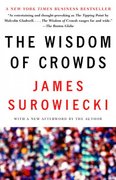thanks in advance
Problem 1: A system is being designed. The inter-arrival times of customers are expected to be exponentially distributed with mean 1/A = 50 msec. Three options are considered as illustrated in Figure 1. (a) One single-server queue with infinite buffer space. The service times are exponentially distributed with mean 1/ = 20 msec. (b) Two single-server queues, each with infinite buffer space. Customers are randomly dispatched to each queue with an equal probability. The service times are exponen- tially distributed with mean 1// = 40 msec at each server. (c) One two-server queue with infinite buffer space. The service times are exponentially distributed with mean 1/ = 40 msec at each server. Find the response time in each option using queueing analysis.Problem 2: Consider a singlm queue with innite buffer space {a} Consider the situation a The inter-arrival time is aeonstant and is given by 1 sec - The service time required by each customer is always I15 sec '2 What is the mean waiting time per customer? [b] Consider the situation I The inter-arrival time is exponentially distributed with mean 1 sec .- The service time required by each customer is exponentially distributed with mean {15 sec What is the mean waiting time per customer? {c} Compare the answers of {a} and [In]1 what conclusions can you draw? Problem 3: An Internet Service Provider has 4 dial-up ports. Connection requests follow a Poisson arrival process with mean arrival rate of 3 requests per hour. The session duration of each connection request is exponentially distributed with a mean of 1.5 hours. What is the probability that a connection request will be rejected? 3Problem 9: Complicated arguments often involve series of implications of the form "Ao therefore Aj therefore A2 therefore...", where the A's are propo- sitions. The truth of any proposition in such an argumentation chain depends on the validity of the foregoing implications. Often such im- plications are not watertight but only true with a high probability. For the purpose of this question suppose if An is true then Anti is true with a 90% chance while if An is false then Anti is true or false with equal probability (" ex falso quodlibet" ). 1. Formulate the change of the truth values of the propositions as a Markov chain and give the transition matrix 2. What does the Markov property mean in this setting? Discuss this assumption. When does it apply? 3. What is the probability that A4 is true, provided Ao was true with 50% probability (0.8248). 4. Calculate the stationary probabilities and interpret them ((1/6, 5/6)). 5. If an adversary checks the argumentation chain and finds one false statement, then she would argue that the argumentation chain is invalid and would reject any further conclusions. We may therefore say that an argumentation chain breaks down if 3 the first false statement is made. Change the Markov chain to model this situation. 6. Calculate the probability that the argumentation chain is still valid after the fourth statement, provided the initial statement was true (0.6561). 7. Calculate the stationary probabilities for the new Markov chain and interpret them ((1, 0)). 8. Calculate the probability that, starting from a true proposition, the argumentation chain breaks down after precisely 3 iterations (8.1%). 9. The adversary of part 5 will only examine the argumentation chain if she can be 50 % sure that she will find a false proposition. How long does the argumentation chain have to be in order for this to be the case, provided An is true. Use a spreadsheet to make your calculations. (7 implications) 10. Calculate the expected number of statements until the argumen- tation chain breaks down if the initial statement is true. (10 implications) 11. Give a formula for the expected number of statements until the argumentation chain breaks down in terms of the probability p that the next statement holds, provided the current statement is true. Additional relevant solved problems can be found in Chapters 19-24 of Richard Bronson, Schaum's outline of theory and problems of oper- ations research (to be available on the G12 shelf soon)










